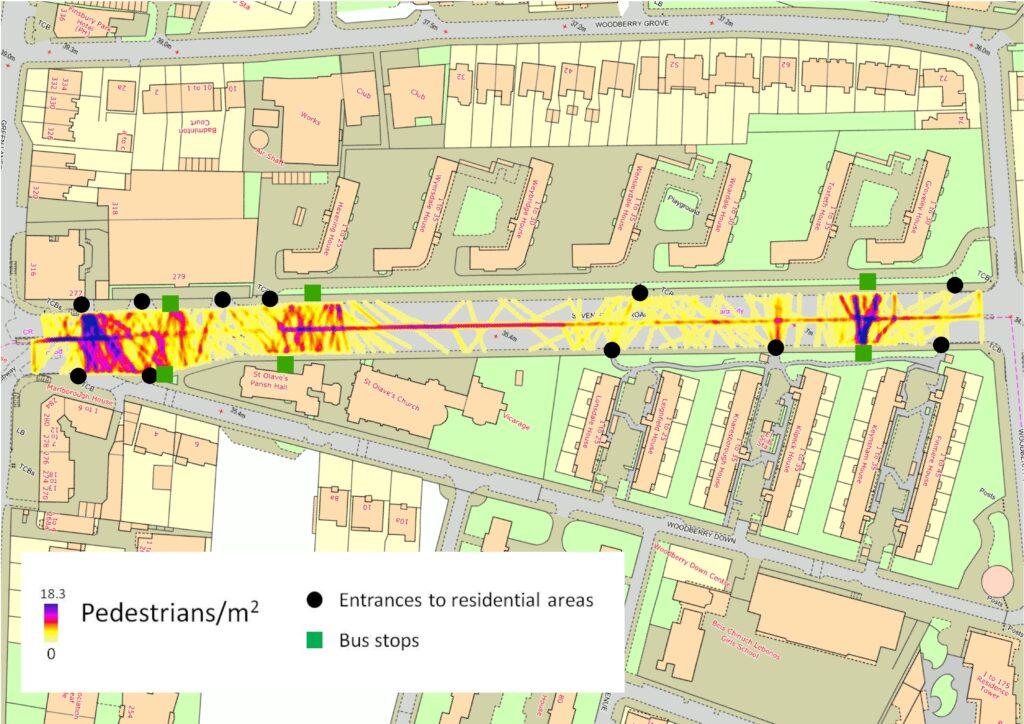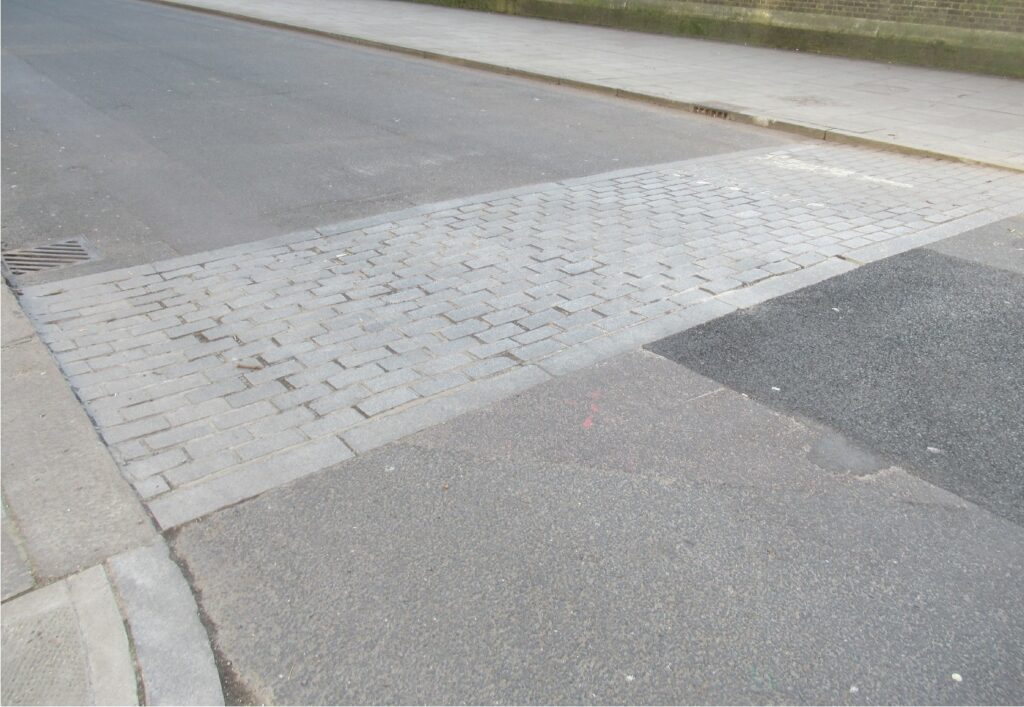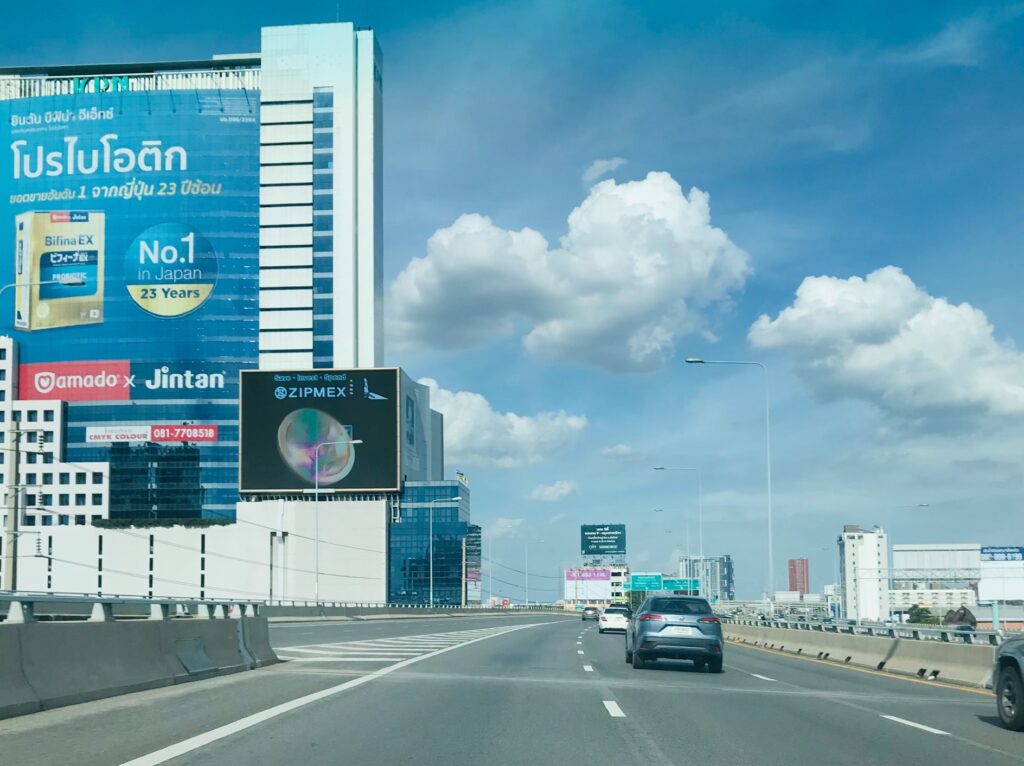Question: What explains risky pedestrian and driver behaviours?
Ensuring safety is one of the main concerns of transport planners. Road collisions have huge human, social, and economic costs. My research on safety has focused on road transport, and looked at the factors behind risky behaviours, both from the perspective of pedestrians and drivers. Here are three examples.
Example 1: Things that convince people to cross the road away from crossing facilities
Pedestrians are supposed to cross the road using designated crossing facilities, such as unsignalised ‘zebras’, signalised crossings, footbridges, or underpasses. But as I mentioned elsewhere in this website, these facilities are not always convenient. So in many cases, people cross the road away from facilities.
So when they do not use facilities, where exactly do pedestrians cross? Is the location related to the conditions of the road? As part of a project at UCL, we have set up a video survey in a busy road in North London during a full day, and then mapped the routes taken by all pedestrians who crossed away from crossing facilities.
The result is in the map below, taken from this presentation. It shows the density of all those pedestrians, during that day. The density is highest in places near bus stops and where the road connects to the residential areas or the streets around. In other words, where the need to to cross the road is highest.

Example 2: Things that persuade drivers to stop for pedestrians, even when they are not required to do so
How about in quieter roads, where the number of vehicles is small and does not convince authorities to install pedestrian crossings? It may be still dangerous to cross these roads, if they have many lanes or if traffic is fast. In that case, is there a way to persuade drivers to stop when they see a pedestrian trying to cross?
‘Courtesy crossings’ are a possible solution. Drivers are not legally required to stop at these crossing, but are encouraged to do so by the design of the crossing. But do drivers really stop for pedestrians at these crossings?
This paper gives some answers. It uses data from a video survey of 937 driver/pedestrian interactions at a mix of courtesy crossings and zebra crossings (where drivers are legally required to stop). The courtesy crossings had different combinations of four design elements: stripes (different from zebra stripes), road surfaces with a different colour or texture, visual narrowing of the road (it appears, from the road surface, that the road is narrow but it isn’t), and ramps.

We found that all four of those design elements increased the probability of drivers stopping for pedestrians, when controlling for the characteristics of roads, vehicles, and pedestrians. Some combinations of elements were even more effective than zebras, where drivers are required to stop. We also found that adding (non-zebra) stripes to an existing courtesy crossing increased courtesy rates from 20% to 97%.
The conclusion is that courtesy crossings can indeed be a solution to increase safety in quiet roads. Drivers’ courtesy behaviour is influenced by what they see in the road surface.
Example 3: Things that drivers see around the road that affect their mood and driving behaviour
Drivers’ safety behaviour is also influenced by what they see around the road. Their mood is influenced too. In this paper I reviewed studies that analysed these influences.
As expected, drivers tend to feel more tired when they see monotonous landscapes (for example, open fields).
In general, landscapes with vegetation reduce drivers’ stress and risky driving behaviours. But that depends on the type of vegetation, how it is spaced along the road, and how far it is from the road. For example, drivers tend to drive slower if the road is lined with trees. But that does not happen if the trees are far away.
Something that is consistently identified as a factor behing risky driving is roadside ads. This is because they distract drivers (that’s precisely why they are there!). But some ads are more distracting than others. Complex ones are more distracting than simple ones. And (as expected, because we’re talking about human drivers) ads with emotional or sexual appeal are more distracting than ones without.

Roadside memorials (to mark the place where other drivers had fatal collisions) can be distracting, but at the same time make drivers more aware of collision risk and may persuade them to drive safely. Drones are very distracting. And seeing wind turbines and utility poles seem to result in slower speeds.
This is all interesting evidence, but there is still not much information on how certain views contribute to drivers’ moods when they see them every day. For example, could exposure to ugly views, day after day, from a car, bus, or train window, contribute to depression? I think it does. But I don’t have evidence. So, like they say in academic papers: the conclusion is that more research is needed.